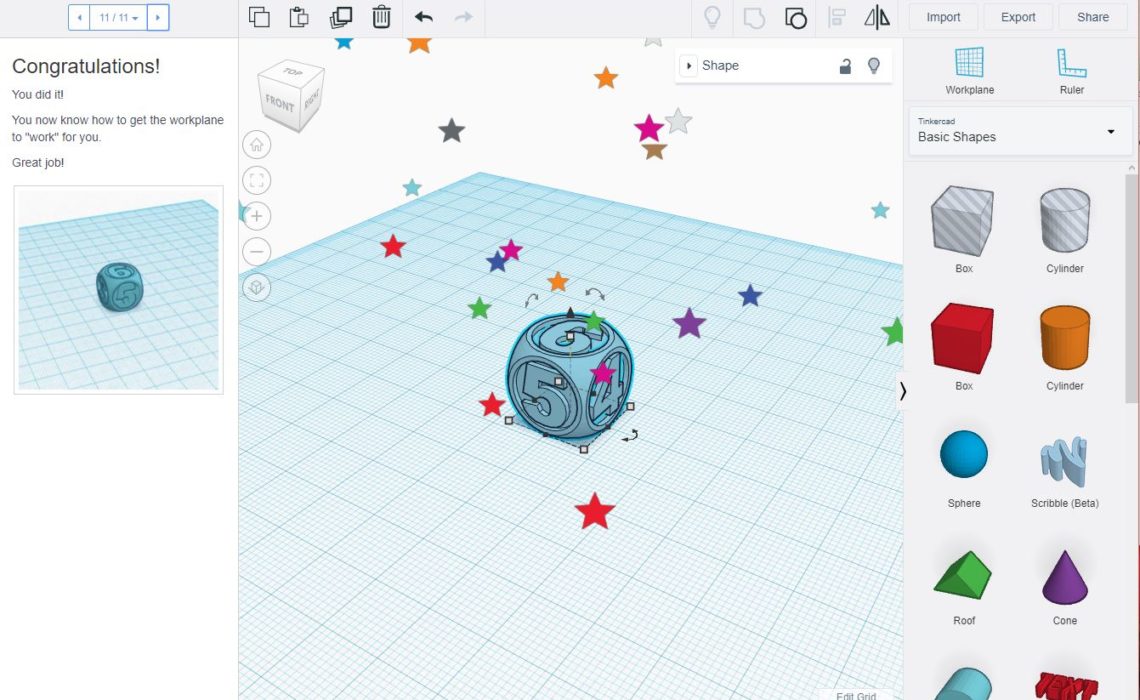
While there are many different versions of free 3D modeling software available, the key is to find an efficient program that matches project requirements and provides the opportunity to make edits easily as product development moves forward.
Quality 3D prints depend on a strong foundation, backed with solid designs and a growing knowledge of 3D modeling tools. Designers and engineers tend to rely on a handful of well-known 3D modeling software programs, serving as the building blocks for successful additive manufacturing of parts. Gaining skill in using 3D modeling tools takes time, and there is always room to improve and advance further as a 3D designer.
Here are five straightforward examples of 3D design software tools that are intended for beginners but can be utilized by all levels.
Blender: A Multi-Purpose Learning Tool for New 3D Designers
Blender continues to trend upward in popularity for 3D designers of all levels, offering a free software program that allows beginners to try a little of everything, whether they want to model, animate, or sculpt. While there can be a learning curve for novices, Blender is a great choice for mastering the fundamentals of 3D modeling software.
Many tutorials are available, allowing access to a top-tier 3D modeling program with no investment required. Considered to be a great educational tool for 3D designers working in a wide range of applications, Blender provides a vast array of tools for creating and editing 3D models. Workflow is streamlined for the 3D designer, and objects and meshes are easily modified.
Cura: Analyzes and Preps 3D Models for 3D Printing
Nothing is more heartbreaking than realizing a 3D model failed because of one missed detail. Overlooking little flaws happens to the best 3D modelers out there, which is why 3D modeling software tools like Ultimaker’s Cura exist. This program proofreads the 3D model, getting it ready for a 3D printer.
As a slicing program, Cura breaks the 3D model down into those many, tiny layers and allows for modifications to the model’s internal structure to make things easier on the printer. Cura alerts 3D designers to any possible issues with 3D models before printing. This 3D open-source slicing software is easy to use and can also be extended via a plug-in system.
SketchUp: Browser-Based Software Tools for New 3D Designers
Powerful 3D modeling software known for its architectural design tools, SketchUp is popular with designers and engineers working in other applications like 3D printing for construction, urban planning, and interior design. SketchUp is a streamlined CAD program, featuring a user-friendly interface that makes it easy to navigate the realm of 3D modeling software and 3D printing.
SketchUp is a freemium version of SketchUp Pro, which supports more advanced features for 3D designers who want to import and export 3D design files and vector images. We recommend the upgrade for more skilled designers interested in 3D printing at the professional level.
TinkerCAD: Learn 3D Design As You Go
One of the most simple and accessible 3D modeling programs, TinkerCAD provides an intuitive interface running from the web browser. To get started, set up an account and either import 3D design files or use pre-existing shapes available from the 3D modeling application.
TinkerCAD offers in-program tutorials, teaching modeling basics, along with providing projects for novices to practice on while gaining a better understanding of 3D modeling–from setting up a project to learning skills like adjusting and positioning objects. Pre-existing assets make up the bulk of available models, limiting the amount of intricacy for models composed entirely in the program. TinkerCAD’s free import feature allows users to make edits to their own imported designs too.
3D Slash: Pixelate Your 3D Models
Blocks, blocks, everywhere! When most of us think about the wonders of 3D printing, we don’t think about how well it can replicate the pixelated graphics of our early childhood video games. Consider the endless possibilities with Legos and Minecraft. That’s where 3D Slash comes in, allowing users to upload their own 3D models. The 3D Slash program then breaks down structures into building blocks that can be toyed with as if they were pixelated images.
3D Slash is bursting at the seams with charm, but there may not be enough options for more advanced 3D designers seeking to create complex 3D models. 3D Slash has an intuitive interface and is highly recommended for 3D stylist beginners.
About Shapeways
Enjoy the benefits of this advanced technology and a wide range of materials from Shapeways for 3D printing your creations with accuracy, complex detail, and no minimum or limits in terms of mass customization or single part orders. Shapeways has worked with over 1 million customers in 160 countries to 3D print over 21 million parts! Read about case studies, find out more about Shapeways additive manufacturing solutions, and get instant quotes here.


Just finding modeling software that was
– not overly complex to use or control
– not a budget buster
– appropriate to purpose (not architecting, interior design, etc.)
was such a job, I’m amazed there are as many doing 3D modeling as there are.
Undermining public use, deprecation, such as AutoDesk’s throwing some perfectly functioning software, Design 123, for “new [and going backwards] Fusion360!”
3D has been painful every step of the way.